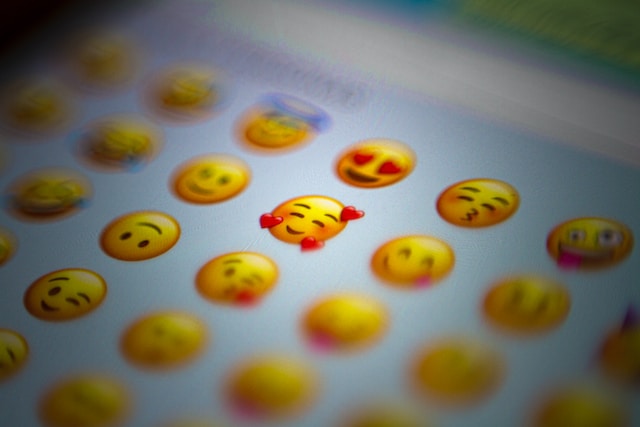Human beings have been progressing rapidly since the dawn of time. From the printing press to automobiles, every century has heralded a new invention or idea that would have been previously inconceivable. Just one hundred years ago, we would never have comprehended the idea of the Internet and the many things that came along with it, like social media. Similarly, how humans communicate through the written word has evolved drastically over time. From hieroglyphics to emojis, this is how human communication has changed over the years.
Since many early societies were agricultural or hunter-gathering based, they didn’t have the time or opportunity to create an alphabet that translated the oral speech into the written word. To combat this issue, symbols were often carved onto the stone to record ideas. Using symbols to communicate ideas ensured no one had to know a common alphabet to communicate; most people could recognize what was being depicted, which was typically farm animals like goats or cattle or images of deities. Although this rudimentary form of communication was effective for the societies that used it because it clearly stated simple ideas, it wasn’t effective for later civilizations that had established permanent settlements, which consequently allowed more opportunities to cultivate new ideas and build a blooming culture. As civilization became more advanced, new communication methods were needed.
Egyptian hieroglyphics are often considered the first true writing system because they displayed an advanced use of glyphs, such as phonetics and consonants, which are even seen today in modern languages. Originally invented to communicate with the many gods the Egyptians worshiped, hieroglyphics spread throughout the empire and became mainly read amongst the nobles, such as priests, royals, and scribes. The creation of the scribe role shows the importance that the written word held in ancient Egypt. Scribes underwent a rigorous education, and upon completion, scribes were held in high esteem. Most of our knowledge of ancient Egypt comes from hieroglyphics, so it’s thanks to the work of scribes from thousands of years ago we can enjoy learning about things like Egyptian mythology.
Most historians agree that the Greek alphabet was the first real alphabet. The far reach of the Greek empire allowed the Greek alphabet to influence other languages and alphabets, including modern English. The link between the modern English language and the Greek alphabet becomes more evident when we consider the influence Greek had on Latin. Rome, the capital of the Latin people, was influenced by Greece in many areas, from architecture to the alphabet. Although English is a Germanic language, it has many influences from Latin, most notably in root words and legal terms.
Modern English has been spoken and written in the United States since our country’s founding. Although recently, in the 21st century, the rise of the internet and social media has given way to new types of communication: emojis and slang. Emojis and slang terms, like abbreviations (for example, TBH, LOL, and BRB), are often used in informal exchanges or on social media. Because of the growing influence of the internet and abbreviated terms, many people wonder if we as a species are devolving, going back to our archaic roots of communication.
So does the rise of emojis in non-verbal communication means we are becoming unintelligent? Experts say no. Emojis fulfill the lack of non-verbal communication cues–eye rolls, winking, thumbs up–that are present in typical face-to-face- interactions. In texting, since we have no way to rely on these social cues to pick up on tone or meaning, emojis fill that space. In many ways, it seems that we have made a full circle when it comes to communication and the written text, yet we have also come so far with advances such as braille, which can be read by touch–but that’s a topic for another time!

